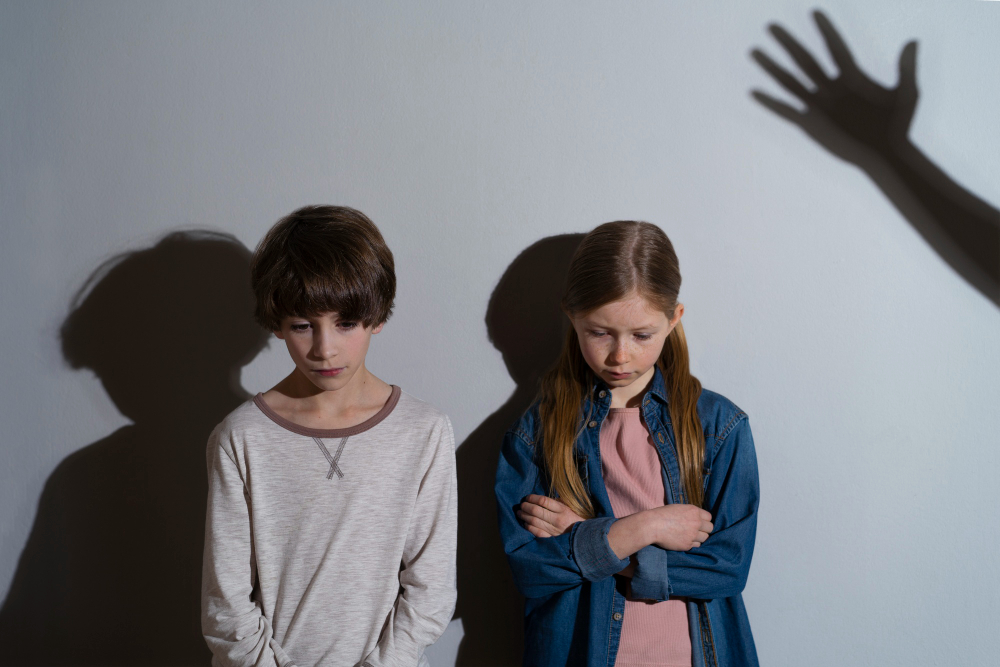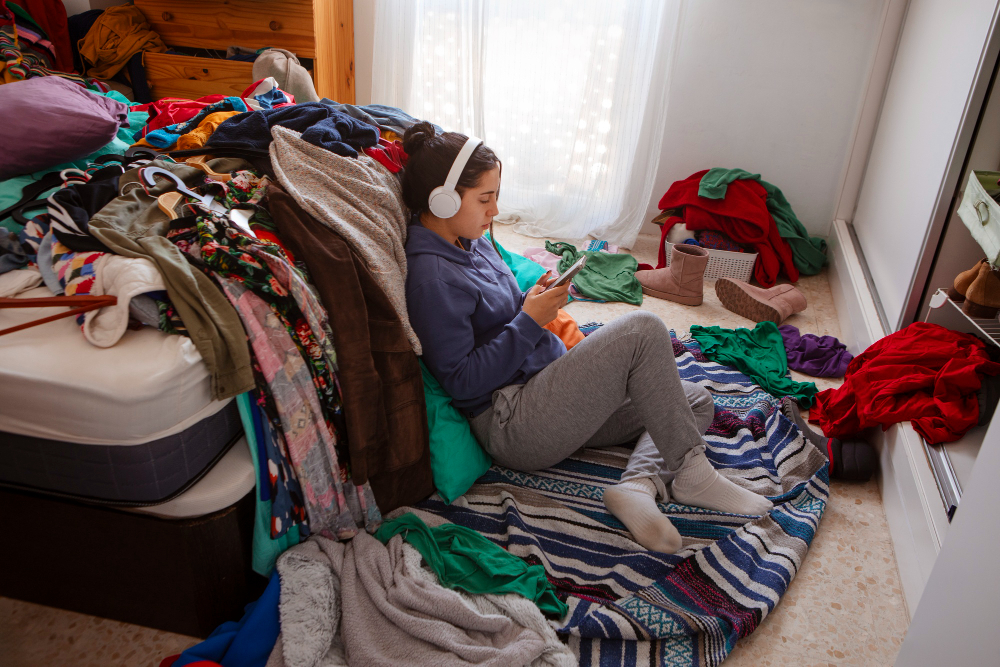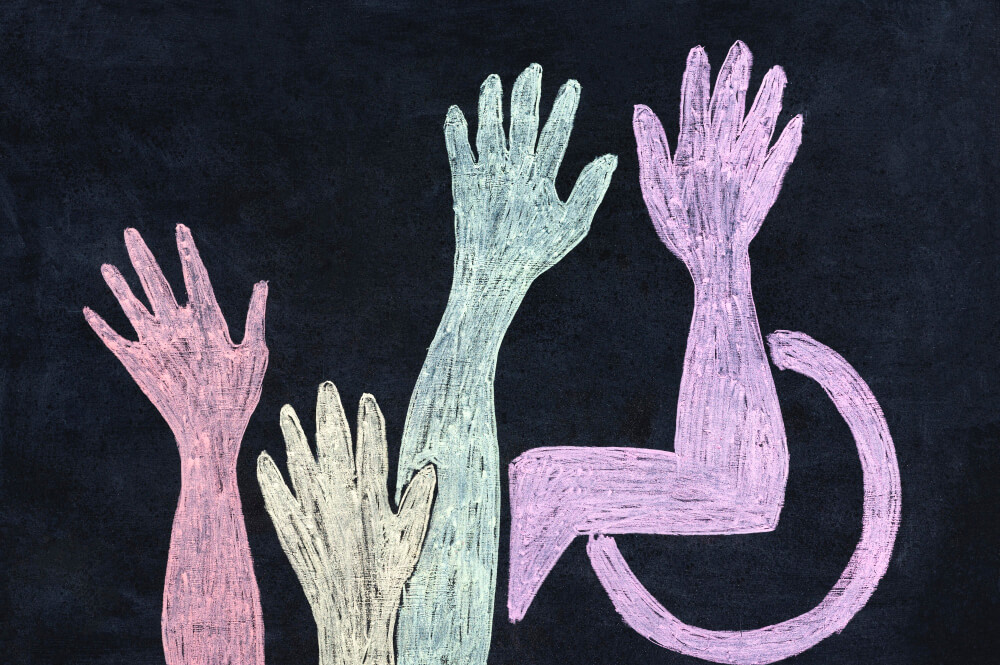In classrooms around the world, students are sometimes punished for the misbehavior of others. One student breaks a rule, and the entire class loses a privilege. This practice – known as collective punishment – persists even though it is broadly recognised as unjust. In fact, collective punishment is explicitly banned under Article 33 of the Geneva Conventions as a war crime!
-
Ava and the Geneva Convention
It began, as so many modern parables do, with a child who told the truth—and a parent who shared it. The image was ordinary: a school feedback form, completed in pencil, uneven in its…
Yet it remains common in schools, often defended as a “logical consequence” or a way to maintain order. Such measures may seem expedient for control, but they exact a heavy toll on emotional safety and learning. Instead of teaching responsibility, collective punishments teach fear. They send the message that merely sitting near a disruptive or neurodivergent peer puts one at risk of punishment, fueling stigma and exclusion of vulnerable students. This essay will explore why emotional safety is vital for learning – especially for marginalised and neurodivergent children – and how punitive, humiliating discipline practices undermine that safety. Drawing on neuroscience, education research, and intersectional feminist and disability justice perspectives, we will examine how “we can’t learn in fight-or-flight”, and how policies that police children through fear and shame end up harming the very students they intend to help.
Brains can’t learn in fight-or-flight
Decades of brain research confirm a simple truth: students learn best when they feel safe and supported, not scared or shamed.
Stress and fear trigger the brain’s “fight or flight” response, releasing cortisol and hyper-activating the amygdala (the brain’s emotional alarm center).
-
Fight flight fawn freeze: surviving school
There are children who throw chairs when cornered, children who slip quietly out the door or hide behind the portable, children who don’t speak for hours, who go limp, who answer every question with…
Neurologist and former teacher Dr. Judy Willis notes that extreme emotional stress can “physically prevent information from reaching the centers of the brain necessary for absorbing new knowledge” edutopia.org.
In other words, a child in panic mode literally cannot process what the teacher is saying.
Even relatively mild negative emotions – embarrassment, frustration, boredom – can cause the brain to flip into survival mode and block memory formation edutopia.org.
When a student is anxious about being humiliated or punished, the learning regions of the brain are effectively disengaged.
Mariale Hardiman, a Johns Hopkins education dean, argues that “reducing stress and establishing a positive emotional climate in the classroom is arguably the most essential component of teaching” edutopia.org. Simply put, emotional safety is not a touchy-feely extra; it is a prerequisite for any meaningful learning to occur.
Modern neuroscience concepts like Dr. Stephen Porges’ polyvagal theory further illustrate this point. When children feel unsafe, their autonomic nervous system shifts into fight/flight/freeze. They become hyper-vigilant or shut down – behaviours that often look like defiance, inattention, or “bad behaviour,” but in reality are stress responses.
As one 2024 literature review explains, anxiety triggers an over-activation of the amygdala which “limits a student’s ability to learn or respond to instructions”endseclusion.org. In these moments, the so-called “misbehaviour” may actually be a child’s nervous system overwhelmed by stress. If the adult response is to yell or punish, it only adds more stress, pushing the child further from the calm state in which learning and reasoning are possible.
-
The moral cost of leaving children in fight-or-flight
Robin was eleven the day he fell and came up swinging. It was recess, and something had happened—a misstep, a bump, a collision on uneven ground. His body hit the pavement. And when he…
Fear and shame as barriers to learning
Because of this brain-body dynamic, disciplinary tactics that rely on fear or shame are counterproductive for education. Yelling at a class, publicly shaming a student, or doling out harsh collective penalties might momentarily coerce compliance, but they do so by provoking fear – and a fearful brain is not a learning brain edutopia.org.
A child afraid of being humiliated in front of peers is focused on self-protection, not exploration or critical thinking. Indeed, research has shown that students who feel embarrassed or singled out in class often disengage to avoid further shame edutopia.org.
They might go silent, stop participating, or even act out more – all instinctive attempts to cope with a hostile environment. Over time, repeated experiences of humiliation can inflict lasting trauma on a child’s self-esteem and trust in others. Education experts have long warned that shame-based discipline can have profound negative effects: causing anxiety, depression, anger, or a cycle of misbehaviour and punishment psychnews.psychiatryonline.org gould.usc.edu.
Rather than reflecting on what they did wrong, children subjected to humiliating punishment typically become preoccupied with feelings of injustice or resentment. In short, punishment may win short-term submission at the cost of long-term learning and wellbeing.
Consider a concrete example: in 2014, a 12-year-old Black girl in Georgia was caught scribbling “hi” on a locker room wall. The school’s reaction was extreme – she was not only expelled but also faced criminal vandalism charges – whereas a white classmate involved received a far lighter punishment law.columbia.edu.
Imagine the message this sends to every student in that school. For the punished girl, the experience was one of public shame and likely terror (police involvement for a minor infraction).
For her peers, especially students of colour, the lesson was that any mistake could bring disproportionate consequences – a climate of fear that stifles the freedom to learn. If a child is worried that a minor misstep could lead to humiliation or harsh retribution, their energy goes into avoiding risk, not into learning new skills. As Dr. Bessel van der Kolk famously noted, trauma and fear “take the brain offline” for learning, as the mind’s priority becomes survival, not curiosity.
“Policing” children through control
Collective punishment is a stark example of a fear-based practice.
Punishing an entire group for one individual’s behaviour not only violates basic principles of fairness, it uses innocent peers as tools of enforcement. The intended effect is that peers will pressure the misbehaving child to comply next time – but this dynamic breeds resentment and ostracism. Essentially, the group penalty turns classmates into jailers and the targeted child into a scapegoat.
Far from feeling accountable, the child who caused the punishment is now shamed before their peers, who are understandably angry about losing a privilege due to someone else’s actions.
This “shame-by-proxy” approach undermines any sense of classroom community or trust. Research shows that students – even as young as preschool – recognise the unfairness of collective punishment, and it erodes their respect for authority and rules.
Rather than learning positive behaviour, children in such environments learn to avoid getting caught and to resent both the teacher and the peer who “ruined it” for everyone.
As we’ve pointed out, collective punishment doesn’t teach better behaviour or responsibility at all – “It teaches fear” change.org. It also teaches children that if they befriend or even sit next to a classmate deemed “disruptive,” they might be punished and stigmatised, a message that intensifies the exclusion of neurodivergent or otherwise marginalised kids change.org.
Moreover, collective punishment exemplifies the mindset of “policing children” rather than educating them. It treats a classroom less like a learning community and more like a penal colony, where the goal is compliance through intimidation. This mindset is closely linked to the rise of zero-tolerance policies and strict behaviour regimes that mirror criminal justice tactics.
Education scholars note that punitive school discipline often employs “surveillance, restrictive, physical, and exclusionary tactics to deter misbehaviour,” with the goal of removing the ‘offender’ from the group endseclusion.org. This might include constant monitoring, isolation (time-outs or seclusion rooms), and even involving law enforcement in routine discipline endseclusion.org.
Such approaches effectively criminalise minor childhood misbehaviours – a phenomenon known as the school-to-prison pipeline. When normal childish antics or stress responses are met with handcuffs, suspensions, or class-wide crackdowns, school begins to feel like a police state. Students in these environments are not learning self-regulation or empathy; they are learning that power can be arbitrary and that school is a place of control and punishment, not curiosity and growth.
Marginalised students disproportionately effected
These harsh discipline practices do not impact all children equally. An intersectional feminist and disability justice lens reveals that the students most likely to be punished and policed at school are those who already occupy marginalised positions in society.
Decades of data show clear disparities: racialised, disabled students, neurodivergent students, and other vulnerable groups face disproportionate discipline compared to their peers.
For example, Black students in the U.S. are far more likely to be suspended or expelled than white students for the same behaviours. Black boys are suspended about three times as often as white boys – and Black girls, whose challenges are often overlooked, are suspended six times as often as white girls law.columbia.edu. In some districts, the disparity is even greater, indicating that bias (whether conscious or systemic) drives many disciplinary decisions law.columbia.edu.
Similarly, students with disabilities (including those with learning differences, ADHD, autism, or emotional regulation dificulties) are disciplined at significantly higher rates than nondisabled students.
National reports indicate that disabled students are suspended 2–3 times more frequently than others and often face harsher consequences for behaviours related to their disability scholarworks.wmich.edu scholarworks.wmich.edu.
The punishment of disabled children can start shockingly early – even in preschool. One comprehensive review found that punitive or corporal punishment is “often directed toward a specific group of students who are marginalised,” namely those who are disabled, Black, Latinx, Native/Indigenous, LGBTQ+, etc., and that this pattern “starts as early as preschool” and continues through all grade levels endseclusion.org.
In other words, the kids who most need support and understanding from the education system are the ones most likely to be on the receiving end of suspensions, expulsions, restraints, or police referrals.
This is a profound equity issue. As scholar Kimberlé Crenshaw emphasises, only an intersectional approach – one that sees how race, gender, disability, and other identities overlap – can address these discipline gaps and their contribution to a pipeline that pushes vulnerable youth out of school and into adverse outcomes law.columbia.edu endseclusion.org.
The consequences of these disparities are severe
Punitive discipline is linked with a cascade of negative life outcomes for the targeted students.
A 2021 systematic review noted that exclusionary and surveillance-oriented discipline (hallmarks of the zero-tolerance era) were disproportionately imposed on Black, Indigenous, Latinx, LGBTQIA, and disabled students, and that such approaches correlated with multiple adverse health and social outcomes – including higher rates of depression, trauma, drug use disorder, suicidal ideation, early pregnancy, and involvement in the criminal justice system endseclusion.org.
Being labeled a “bad kid” can become a self-fulfilling prophecy. When students are repeatedly suspended or shamed, they miss instructional time and feel alienated from school, leading to lower academic achievement and higher dropout rates endseclusion.org.
One recent study in JAMA (2023) followed over 16,000 California students and found that those who received an exclusionary discipline (like suspension) showed a significant drop in their academic performance the following year – their GPA fell by nearly a full point on average endseclusion.org.
Notably, that study also found Black and Latino students were far more likely to receive such punishments in the first place endseclusion.org.
In effect, our discipline system often doubles down on existing inequalities: the students who start with the least social power or support are punished the most, causing them to fall further behind academically and emotionally.
This is why youth advocates talk about “discipline trauma” – the compounding trauma of being continually punished, which can instill feelings of hopelessness or anger that carry into adulthood endseclusion.org endseclusion.org.
For example, disabled students – especially those who are also from racialised communities – may experience school as a gauntlet of surveillance and punishment. They are more likely to be restrained or secluded (locked in isolation rooms), practices which have been condemned as abusive.
A Canadian survey in 2021 found dozens of cases of children with disabilities being pinned down or locked away at school, often without parental knowledge; over three-quarters of those parents reported their child was traumatised by the experience inclusionbc.org.
And importantly, all students feel less safe in schools where they witness such treatment of their peers inclusionbc.org.
\A classroom where one child is routinely removed forcefully or where the whole class gets punished unpredictably is a classroom walking on eggshells. Fear spreads, trust evaporates. This undermines learning for everyone.
-
Why I’m reviewing school codes of conduct
To the student who found this page because you typed something scared or confused or angry into a search bar—something like “are teachers allowed to take away recess?” or “can I be suspended for…
Neurodiversity-affirming perspectives
To create truly safe and inclusive schools, educators are increasingly adopting a neurodiversity-affirming perspective – one that recognises neurological differences (autism, ADHD, learning disabilities, etc.) as natural variations, not “bad” behaviour or defects to punish.
From this viewpoint, what we label “misbehaviour” is often a child communicating distress or unmet needs in the only way they can. In fact, recent research suggests that true wilful misbehaviour is far less common than we assume.
One review of behavioural science literature concluded that “true misbehaviour is exceedingly rare, and most of the time, the child is expressing a reaction to a stressful event and/or stressor” – whether that stressor is academic frustration, sensory overload, emotional upset, or something else endseclusion.org.
Such stress behaviour is subconscious and not intentional, meaning the child isn’t choosing to act out but is driven by anxiety or neurological response endseclusion.org.
Crucially, if a behaviour is rooted in stress or a nervous system reaction, punishing it will not teach the child anything useful. Yelling at a student who is melting down or giving detention for an anxiety-driven outburst is as futile as punishing a coughing child for having a cold.
In fact, it’s worse than futile – it often escalates the behaviour or triggers new trauma, creating a vicious cycle (researchers call it the “discipline trauma cycle”, where stress leads to behaviour, which leads to punishment, which creates more stress and more disruptive behaviour) endseclusion.org.
Neurodiversity-affirming educators instead ask: What is this behaviour communicating? A classic motto in this field is “Behaviour is communication.” For example, a student throwing a tantrum might actually be communicating that the work is too difficult (academic stress), or that they are overwhelmed by noise (sensory overload), or that something at home is upsetting them.
If we approach the situation with curiosity and empathy, we can address the underlying need – perhaps by giving the student a quiet break, teaching a coping skill, or adjusting the task.
On the other hand, if we respond with punishment, we not only fail to meet the need, we add a new layer of distress on top of it. This is especially critical for neurodivergent children such as those with autism. Autistic advocates and progressive practitioners emphasise that many behaviours common among autistic kids – like stimming (repetitive movements), meltdowns due to sensory or emotional overload, or needing to escape a situation (“eloping”) – are not wilful misbehaviour at all. They are innate coping mechanisms or expressions of distress. “Do not punish for typical autistic behaviours,” one autism center advises parents, “Stimming and meltdowns from overstimulation are behaviours [children] cannot control” leafwingcenter.org.
Instead of reacting punitively, adults should try to interpret these behaviours compassionately and adjust the environment or supports. After all, if a child could easily control a meltdown or remain seated calmly, they would! Kids want to do well; as psychologist Dr. Ross Greene famously says, “Kids do well if they can.” When they aren’t doing well, our job is to figure out what’s blocking them – whether it’s a lagging skill, an unmet need, or an unsafe feeling – and help remove that barrier.
From a disability justice perspective, punitive discipline is seen as a form of ableism – punishing disabled people for exhibiting their disabilities. Disability justice activists call for ending the use of punishment in schools altogether, arguing that it denies disabled students the supports and dignity they deserve scholarworks.wmich.edu.
The cumulative impact of being punished throughout childhood for behaviours one cannot help is devastating: it’s no surprise that disabled youth (especially disabled youth of color) are underrepresented in higher education and overrepresented in juvenile detention scholarworks.wmich.edu.
The goal, therefore, is to shift from a punishment paradigm to a support paradigm – one grounded in understanding, accommodation, and respect for neurodiversity. This means training teachers in trauma-informed and neurodiversity-affirming practices (e.g. de-escalation techniques, sensory-friendly classroom. It means centring the voices of those most affected – “nothing about us without us” – so that policies are informed by the lived experiences of disabled, Black, Indigenous, and LGBTQ+ students who have historically been targets of harsh discipline. And it means recognising that discipline is not about exerting power; it’s about teaching and relationship.
Approaches like restorative justice, social-emotional learning, collaborative problem solving, and positive behavioural interventions are all aligned with this philosophy. They seek to hold kids accountable without humiliation or exclusion, by engaging the student in understanding consequences, repairing harm, and building the skills to do better – all within a context of safety and caring.
-
Beyond blame: reimagining discipline in a trauma-informed world
Collective punishment is neither effective nor ethical. It disciplines the group for the actions of one, eroding trust and reinforcing the very dynamics of power and fear that trauma-informed practice seeks to heal. In…
Rethinking discipline
The evidence is overwhelming that punitive, fear-based discipline does more harm than good. Long-term studies have found that rather than improving behaviour, harsh punishment tends to worsen it, leading to more aggression and higher rates of future misbehaviour endseclusion.org endseclusion.org. It also correlates with lower academic performance and increased dropout, particularly for marginalised students endseclusion.org endseclusion.org.
“Trauma-informed” schools that train staff on the impacts of trauma and stress report fewer behaviour incidents and stronger teacher-student relationships. These approaches all share a common thread: they prioritise emotional safety and view misbehaviour as a problem to be solved, not a sin to be punished.
At a broader policy level, there is a growing call to end exclusionary and shaming practices. Advocates urge administrators and policymakers to ban collective punishment explicitly (as the BC petition demands) change.org, and to eliminate zero-tolerance rules that mandate suspensions for minor infractions.
In place of these, schools can adopt restorative justice programs where students learn to make amends and resolve conflicts through dialogue – an approach shown to reduce repeat offenses and racial disparities in discipline. Supporting teachers is key as well: educators need training and resources to implement alternatives (like de-escalation strategies, calming corners, or individualised behaviour support plans) so that punishment isn’t their only tool. It’s also crucial to engage families and students in creating a positive school culture, rather than imposing top-down control. When students – including those most often disciplined – have a voice in setting norms and consequences, the environment becomes more equitable and respectful.
-
Rethinking accessibility leadership, training, and labour in BC public education
In accessibility work, most transformative insights come directly from disabled people. Lived experience is primary data; manuals and metrics are, at best, secondary literature. In schools, teachers are experts in pedagogy, yet few are…
In conclusion
In conclusion, ensuring emotional safety is not a soft sentimentality; it is foundational to any effective learning environment. Children, especially those who have experienced trauma or who are neurologically diverse, simply cannot thrive under constant threat of humiliation or harm. If we want academic improvement, we must recognise that brains learn when they feel safe, connected, and respected – not when they are in survival mode endseclusion.org edutopia.org.
Policies that only focus on suppressing “bad” behaviour – through violence, exclusion, or fear – end up crippling many children’s potential, in the words of disability justice advocates. They may momentarily control the most disruptive outbursts, but at what cost?
The cost is quiet suffering by many students, a legacy of shame and distrust, and whole groups of marginalised youth pushed out of the education system.
We do not need to choose between safe classrooms and compassionate ones – the two goals are one and the same. A truly safe classroom is one where every student, including the most vulnerable, knows that mistakes will be met with guidance, not humiliation; where differences are met with understanding, not punishment; and where discipline means teaching, not policing.
Only in that kind of environment can all children learn and succeed. As we move forward, educators and policymakers have a responsibility to listen to the research and to the voices of students themselves: end the harmful punishments, and build schools on a foundation of emotional safety, fairness, and dignity change.org.













